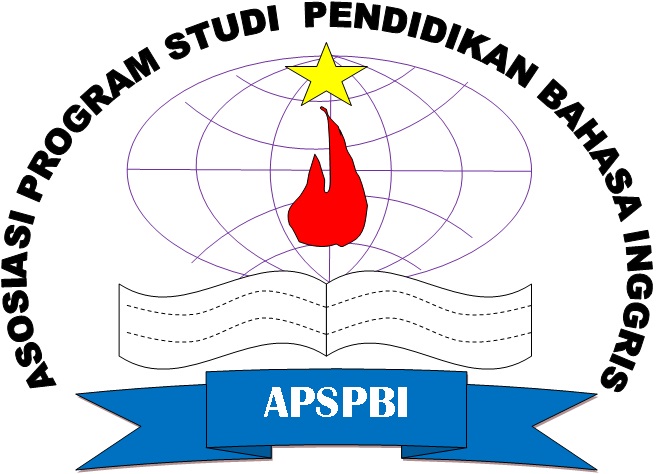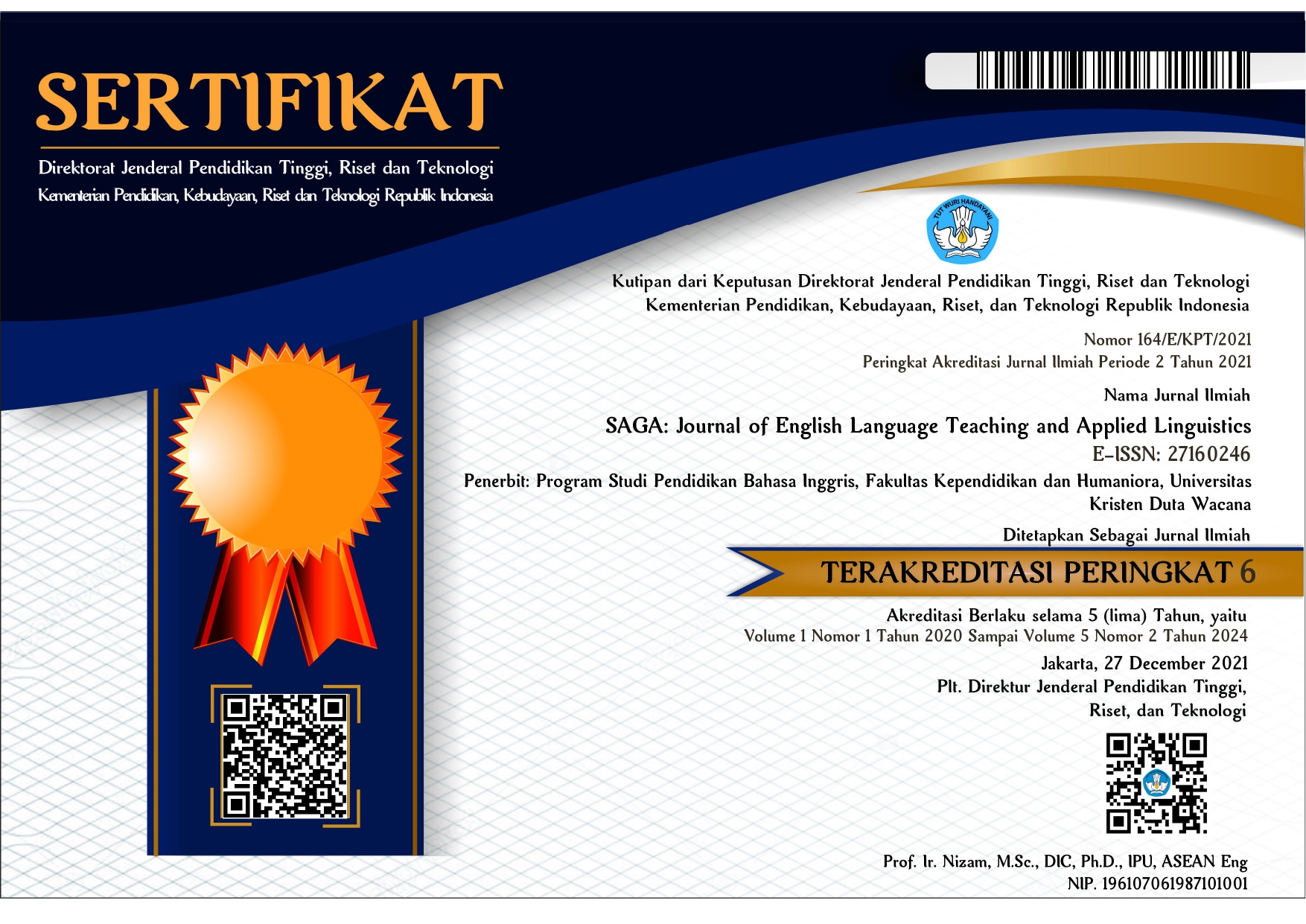Developing Interactive Multimedia-based E-Learning to Teach Reading
DOI:
https://doi.org/10.21460/saga.2024.51.167Keywords:
ADDIE, E-Learning Interactive, Multimedia, ReadingAbstract
Teaching phenomenon during Covid-19 Pandemic demanded teacher used platforms for online learning. Teaching via online learning caused students' learning motivation decreases. Students were passive during learning. Based on school regulations, teachers can only use two platforms for online learning, namely, Google Class Room and WhatsApp. Teachers were not allowed to upload files that were too large so that it would burden the students, and the types of files that can be sent on the two platforms were also very limited. The aims of the study are to identify students’ need for learning and develop appropriate interactive multimedia-based e-learning to teach reading. This was Research and Development study which employed ADDIE Design. The study was conducted for the tenth-grade students of SMAN 3 Bantul. The result showed the target needs most of the students choose to master English and can read English text with good pronunciation are their goals. The learning needs as determined by the needs analysis are divided into input, planning, methods, the role of the teacher, and environment. In addition, Interactive learning multimedia developed using ADDIE in the form of Microsoft PowerPoint. The menus consisted of Home Page, Main Menu, and Extras Menu. The mean score for the content aspect was 3.86 and the media aspect was 3.625 which both were categorized as “very good”. The mean of the implementation and interview to the students’ response is 87.75/100 points. In conclusion, interactive multimedia is appropriate and feasible in teaching and learning reading.
References
Aldoobie, N. (2015). ADDIE model. American International Journal of Contemporary Research, 5(1).
Alsadhan, A. O., Alhomod, S., & Shafi, M. M. (2014). Multimedia-based e-learning: design and integration of multimedia content in e-learning. International Journal of Emerging Technologies in Learning (iJET), 9(3), 26–30. 10.3991/ijet.v9i3.3308
Asih, W. K. (2013). Developing interactive learning multimedia to teach reading narrative texts for the 8 [Universitas Negeri Yogyakarta]. https://eprints.uny.ac.id/21062/1/Wiji Kurnia Asih 08202241068.pdf
Branch, R. M. (2009). Instructional design: the ADDIE approach. In Encyclopedia of Evolutionary Psychological Science. Springer. https://doi.org/10.1007/978-3-319-19650-3_2438
Dewi, T. H. S., Gunarhadi, & Riyadi, K. (2018). The importance of learning media based on illustrated storybooks for primary school. Proceeding of International Conference On Child-Friendly Education, Universitas Muhammadiyah Surakarta, April 21st-22nd, 233–236. https://publikasiilmiah.ums.ac.id/bitstream/handle/11617/10069/ICCE Proceeding FULL rev06062018_41.pdf?sequence=1
Farha, N. A., & Rohani, R. (2019). Improving students’ reading comprehension of report text with KWL strategy. ELT Forum: Journal of English Language Teaching, 8(1), 25–36. https://doi.org/10.15294/elt.v8i1.30244
Gay, I. R., Mills, G. E., & Airasian, P. W. (2012). Educational research competencies for analysis and applications. The United States of America: Pearson Education, Inc.
Harmer, J. (2010). The practice of English language teaching. Pearson Longman. https://www.academia.edu/25472823/The_Practice_of_English_Language_Teaching_4th_Edition_Jeremy_Harmer
Imron, A., Asri, A. N., & Suryadi, S. B. (2022). Development of English teaching module for electrical engineering study program. SAGA: Journal of English Language Teaching and Applied Linguistics, 3(1), 69–80. https://saga.ukdw.ac.id/index.php/SAGA/article/download/120/33
Kementerian Pendidikan dan Kebudayaan Republik Indonesia. (2020). Surat Edaran Nomor 4 Tahun 2020 Tentang Pelaksanaan Kebijkan dan Pendidikan dalam Masa Darurat Penyebaran Corona Virus Disease (Covid-19) (Circular Letter Number 4 of 2020 Regarding Implementation of Policy and Education in the Emergency Period of the Spr (No. 4). Jakarta: Kementerian Pendidikan dan Kebudayaan.
Mayora, C. (2006). Integrating multimedia technology in a high school EFL program. English Teaching Forum, 44(3), 14–22. https://www.researchgate.net/publication/274775589_Multimedia_Based_E-learning_Design_and_Integration_of_Multimedia_Content_in_E-learning
Mishra, S., & Sharma, R. C. (2005). Interactive multimedia in education and training (Vol. 2). United States of America: Idea Group Publishing. https://doi.org/10.4018/978-1-59904-953-3.ch062
Mulyaningsih, D. U. (2013). An analysis of students’ ability in writing narrative texts. Journal of English and Education, 1(2), 16–22. https://ejournal.upi.edu/index.php/L-E/article/view/579
Sari, I. N. (2018). Interactive multimedia in teaching reading. ELLITE: Journal of English Language, Literature, and Teaching, 3(1), 36–41. https://doi.org/10.32528/ellite.v3i1.1776
Spratt, M., A., Pulverness, & Williams, M. (2005). The TKT (Teaching Knowledge Test) Course. Cambridge University Press.
Tanggoro, U. (2015). The use of instructional media to improve students’ motivation in learning English. Dialektika, 3(1), 100–107.
















